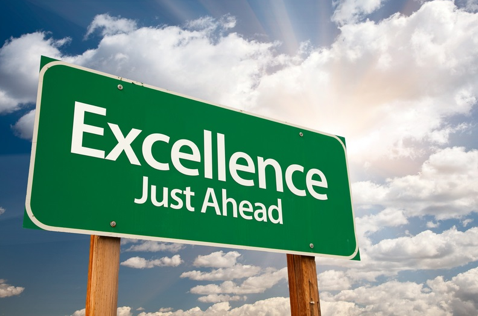Overcoming the Curse of the Center of Excellence Model (COE)



Centers of Excellence (COE) have been around in technology for over 30 years, but despite this longevity, COE means different things to different people. Like Lean and Kanban, the COE has its origin in manufacturing, where it is used as a centralized body to help improve factory operations and
Centers of Excellence (COE) have been around in technology for over 30 years, but despite this longevity, COE means different things to different people. Like Lean and Kanban, the COE has its origin in manufacturing, where it is used as a centralized body to help improve factory operations and output.
In technology, COEs are not always viewed as adding value, but are considered bureaucratic auditors that police an organization under the guise of promoting ‘best practices’. While most COEs have good intentions, they have been created for the wrong reasons. COEs should not be about managing business as usual. They should focus on pushing beyond the status quo, delivering incremental value to the business.
At the heart of the challenge is a fundamental misunderstanding of who (or what) the COE is and the specific value it is expected to provide to the business. Ask the leaders of any COE to describe the mission of their respective COE and you will get a myriad of responses like:
My COE is a…
- Governing body ensuring compliance with regulations
- Shared service organization for application development and delivery
- Program management office (PMO)
- Best practice community to share best practices between business units
- Library of standardized and reusable assets
- License and vendor management group
- Salesforce innovation lab to prototype new technology
- Internal consultancy to support projects
- Global support team for Salesforce across business units
- Code conflict and deployment team
Looking at that list, you may think, “Yes! I want a COE that is all of that.” The challenge is that each item listed requires different degrees of expertise, managing different processes, with different outcomes, each of which with different success metrics. As COEs try to be “all things to all people”, the business is left wondering what overall value the COE is providing. The cliché rings very true… “If you try pleasing everyone, no one will be happy.”
Perception is Reality
The success of any COE depends on its ability to clearly define its role in the organization and the value it provides to its customers (the business). This clarity benefits the business by providing highly focused resources that can be counted upon to deliver results.
At Salesforce we are seeing a positive trend with respect to COEs. This success can be attributed to COE specificity, where organizations create multiple types of COEs, each with different resources, values, design principles, funding models, and success metrics. These types can be summarized in the following 4 COEs:
- Best Practice Centers – These are the “sharers,” focusing on creating environments where business units can collaborate with each other on like-minded processes and technologies, designed to more rapidly enable lines of business.
- DevOps Centers – These are the “doers,” focusing on providing a shared service to scope, design, develop, and deliver across with optimal IT governance, designed to foster standardization and reuse.
- Competency Centers – These are the “guiders,”focusing on establishing best practices and standards to enable, build competency, and embed expertise within individual lines of business through the creation of targeted improvement agendas.
- Innovation Centers – These are the “creators,” focusing on the incubation and experimentation required to develop the capabilities with (emerging) technologies, designed to accelerate maturity and time to value.
Historically we have seen organizations create Centers of Excellence in the order listed above, however, in response to what some see as the failure of traditional COEs, we are seeing a new trend to start with Innovation Centers. Regardless of the type of COE you implement, it must always drive tangible business value through measurable success metrics.
Through clear definition and a focus on ensuring the “right people” are in the “right seats,” the curse of the COE can be turned around, becoming a significant value-driver for any organization.
About the Author
Matt Evans is part of Salesforce’s Innovation and Transformation Center, a Cloud Services offering that helps customers achieve their most ambitious goals. Matt is an award-winning, next-generation strategic Salesforce enterprise strategist who is an expert in building integrated and high-performing operating models and Centers of Excellence.

























